Author: Brian Hall
As the half-sister to Australia’s highly lauded Galaxy hop, it might be easy to assume that Ella contributes similar punch-you-in-the-face fruity notes. However, existing descriptors seem to suggest it inherited more of the noble characteristics from its father, Spalt, imparting beers with pleasant floral and spicy aromas when used in moderate doses. That’s not to say Ella should be relegated to lighter styles, as it offers solid alpha acid and oil content, making it well suited for bigger and hoppier beers.
Alpha: 13 – 16.5%
Beta: 4.8 – 7.8%
Cohumulone: 34 – 38% of alpha acids
Total Oil: 2.4 – 3.4 mL/100g
Myrcene: 40 – 50%
Humulene: 16 – 22%
Caryophyllene: 12 – 18%
Farnesene: < 1%
Linalool: unknown
ß-Pinene: unknown
Geraniol: unknown
Parentage: Tetraploid Hallertauer mittelfrueh and USDA 21381M male hop
Hitting the market in 2007 under the original moniker Stella, Ella was fairly well received by brewers who noted its ability to impart noble characteristics when used in small amounts while contributing fruitier notes at higher usage rates. Having never used this relatively new variety myself, I was excited to see how it would play in a single hop Pale Ale.
| MAKING THE BEER |
With the goal being to place the hop character front and center, I went with a simple Pale Ale recipe for this batch.
Ella Pale Ale
Recipe Details
| Batch Size | Boil Time | IBU | SRM | Est. OG | Est. FG | ABV |
|---|---|---|---|---|---|---|
| 5.5 gal | 60 min | 37.5 IBUs | 5.4 SRM | 1.050 | 1.013 | 4.9 % |
| Actuals | 1.05 | 1.008 | 5.5 % | |||
Fermentables
| Name | Amount | % |
|---|---|---|
| Lamonta American Style Pale Malt (Mecca Grade) | 10 lbs | 90.91 |
| Vanora Vienna-style Malt (Mecca Grade) | 1 lbs | 9.09 |
Hops
| Name | Amount | Time | Use | Form | Alpha % |
|---|---|---|---|---|---|
| Ella (aka Stella) | 7 g | 60 min | Boil | Pellet | 15.1 |
| Ella (aka Stella) | 15 g | 20 min | Boil | Pellet | 15.1 |
| Ella (aka Stella) | 15 g | 5 min | Boil | Pellet | 15.1 |
| Ella (aka Stella) | 28 g | 1 min | Boil | Pellet | 15.1 |
| Ella (aka Stella) | 85 g | 6 days | Dry Hop | Pellet | 15.1 |
Yeast
| Name | Lab | Attenuation | Temperature |
|---|---|---|---|
| Dieter (G03) | Imperial Yeast | 75% | 60°F - 69°F |
Notes
| Water Profile: Ca 126 | Mg 0 | Na 0 | SO4 118 | Cl 135 |
Download
| Download this recipe's BeerXML file |
After collecting the full volume of water and lighting the flame under it, I weighed out and milled the grains.
Once the water was properly heated, I added the grains and stirred to incorporate before checking to ensure it hit my target mash temperature of 154°F/68°C.
When the 60 minute mash was complete, I pulled the grain bag out of the kettle and let it drip while the wort was heating up.
At this point, I weighed out the kettle hop additions.
The wort was then boiled for 60 minutes with hops added at the times listed in the recipe.
When the boil was finished, I quickly chilled the wort.
A hydrometer measurement confirmed the wort was at my target OG.
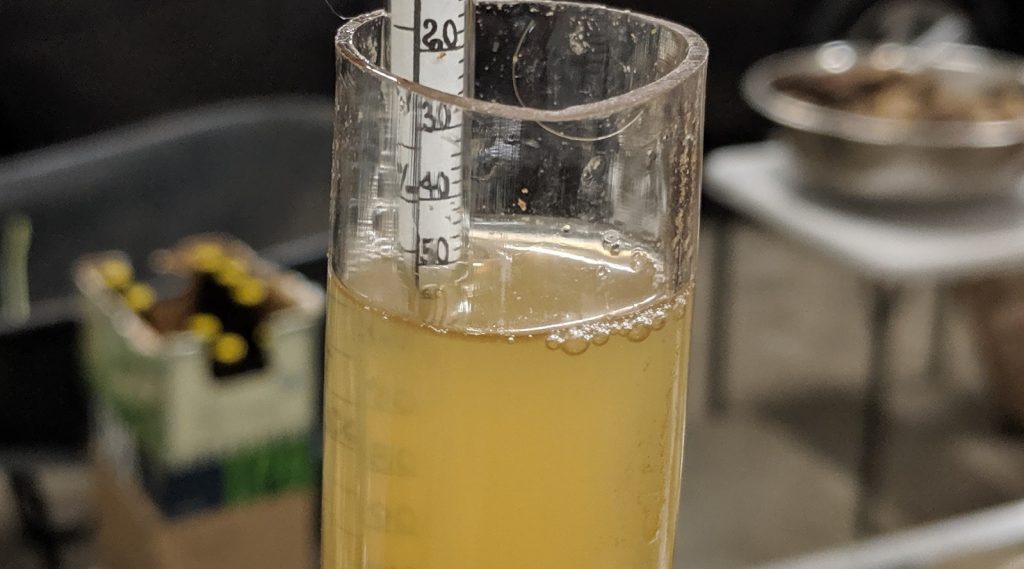
The chilled wort was then transferred to a sanitized Brew Bucket.
Next, I pitched a pouch of Imperial Yeast G03 Dieter.
The beer was placed in my chamber and left to ferment at 66°F/19°C for 5 days before I returned to add the dry hop charge.
After another week, fermentation activity was absent so I took a hydrometer measurement indicating FG had been reached.
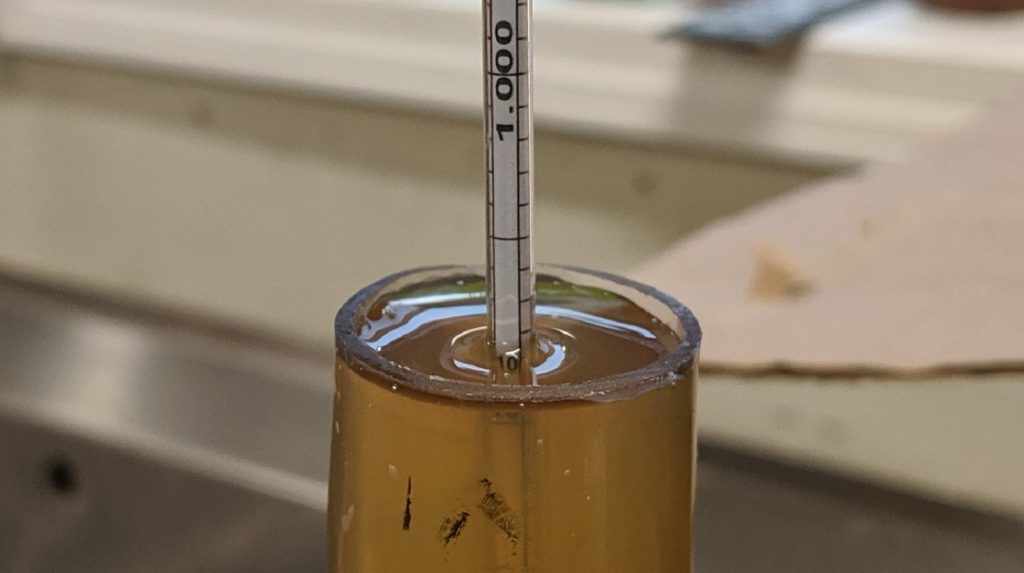
The beer was then transferred to a sanitized keg.
The filled keg was placed in my keezer where it was burst carbonated then left to condition for a week before it was ready to serve to blind tasters.
| METHOD |
Participants were instructed to focus only on the aromatic qualities of the beer before evaluating the flavor. For each aroma and flavor descriptor, tasters were asked to write-in the perceived strength of that particular characteristic on a 0-9 scale where a rating of 0 meant they did not perceive the character at all and a 9 rating meant the character was extremely strong. Once the data was collected, the average rating of each aroma and flavor descriptor was compiled and analyzed.
| RESULTS |
A total of 19 people participated in the evaluation of this beer, all blind to the hop variety used until after they completed the survey. The average aroma and flavor ratings for each descriptor were plotted on a radar graph.
Average Ratings of Aroma and Flavor Perceptions
The 3 characteristics endorsed as being most prominent by participants:
| Aroma | Flavor |
| Tropical Fruit | Tropical Fruit |
| Citrus | Pine |
| Stone Fruit | Resinous |
The 3 characteristics endorsed as being least prominent by participants:
| Aroma | Flavor |
| Onion/Garlic | Onion/Garlic |
| Dank/Catty | Berry |
| Spicy/Herbal | Dank/Catty |
When asked to rate the pungency/strength of the hop, most tasters perceived it as being mildly to moderately pungent.
Tasters were then instructed to identify beer styles they thought the hop would work well in.
Finally, participants were asked to rate how much they enjoyed the hop character on a 1 to 10 scale.
My Impressions: I perceived the flavor of this Ella Pale Ale as being a combination of tropical fruit with some light floral notes. The pungency was low to me, even though it was hit with a fairly large dry hop charge, but that wasn’t necessarily a bad thing.
| CONCLUSION |
With such a close relation to Galaxy, one of the beer world’s most notably strong hop varieties, the assumption that Ella would share certain characteristics is easy to understand. While tasters who blindly evaluated a beer made entirely with Ella tended to agree it wasn’t quite as pungent as its popular sibling, they did endorse it as having certain similar characteristics including tropical fruit, which received the highest rating in terms of both aroma and flavor.
Moreover, it seemed tasters had a pretty strong liking of Ella hop characteristics as indicated by a majority of tasters rating their preference a 6 or higher on a 10 point scale. Unlike some modern varieties, these results also suggest Ella has the ability to impart desirable fruitiness without the cat urine or garlic detested by some.
Being fully aware of Ella’s heritage prior to brewing this Hop Chronicles beer, I admittedly developed some expectations that influenced my initial thoughts about this variety. However, as I worked my way through the keg and acknowledged my bias, my opinion began to change. Would I select Ella as the feature hop in a NEIPA? Probably not. But I do feel it would work nicely in a hoppier pale lager and may even do some good as a mid-boil addition in other styles.
Ella hops are available now at Yakima Valley Hops, get them while you can! If you have any thoughts on this variety, please feel free to share them in the comments section below.
Support Brülosophy In Style!
All designs are available in various colors and sizes on Amazon!
Follow Brülosophy on:
FACEBOOK | TWITTER | INSTAGRAM
If you enjoy this stuff and feel compelled to support Brulosophy.com, please check out the Support page for details on how you can very easily do so. Thanks!

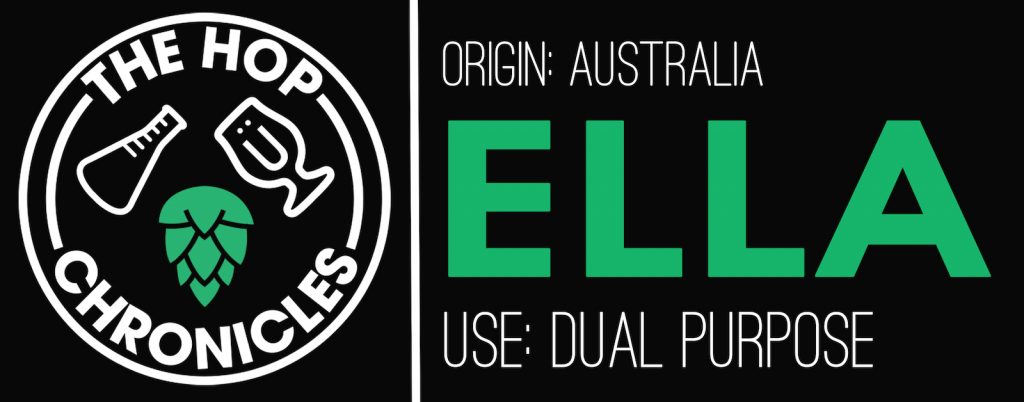

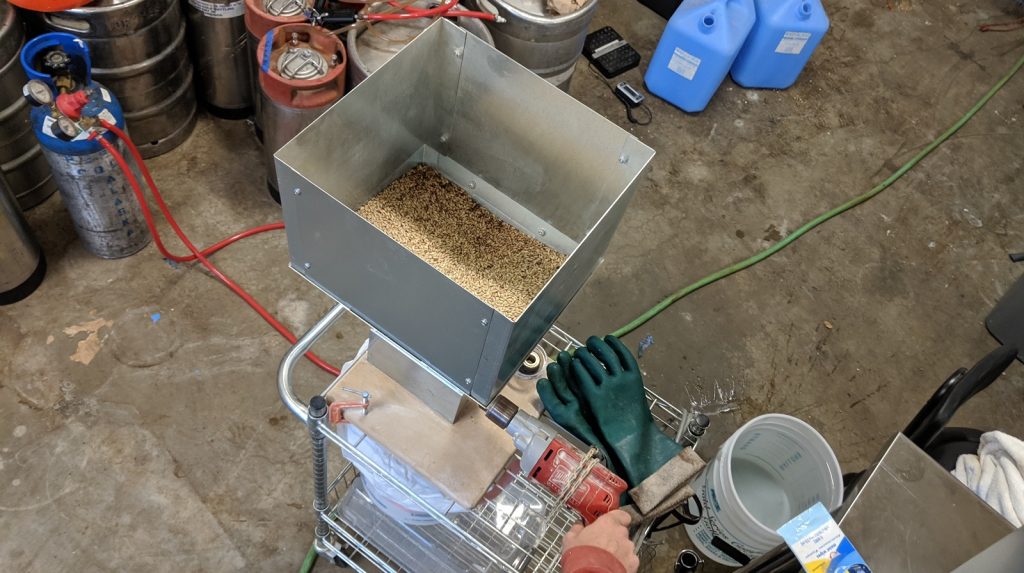
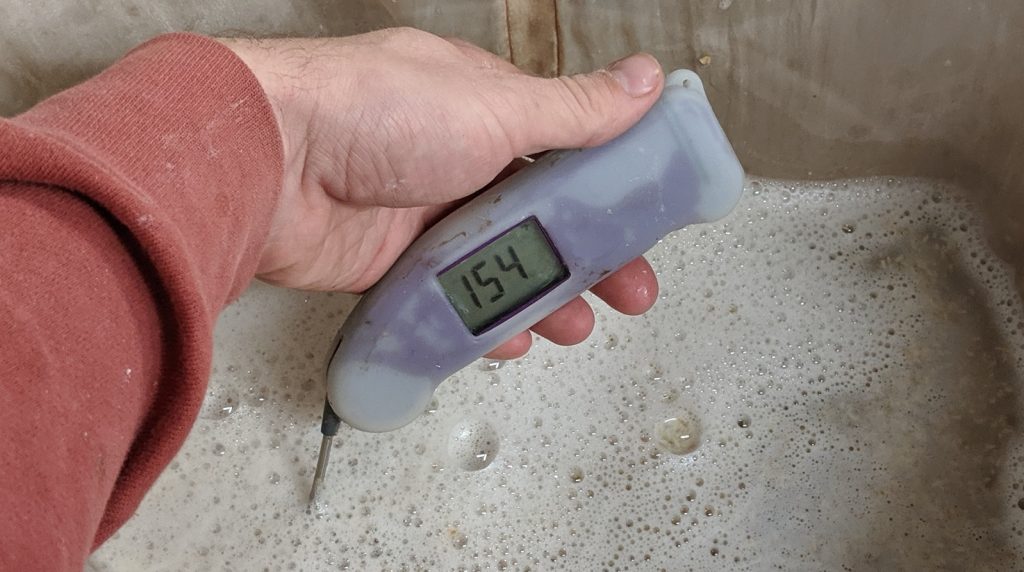
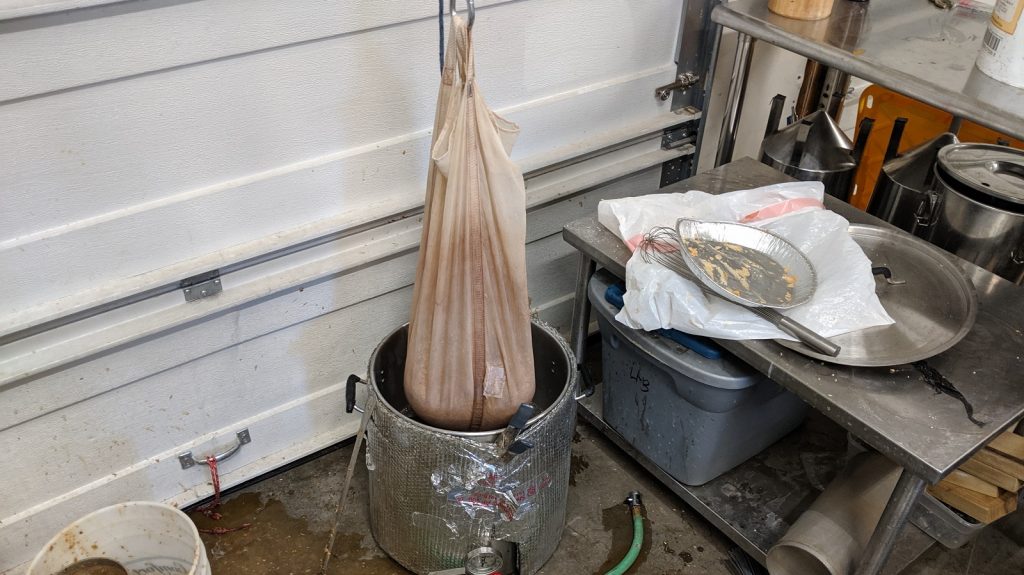
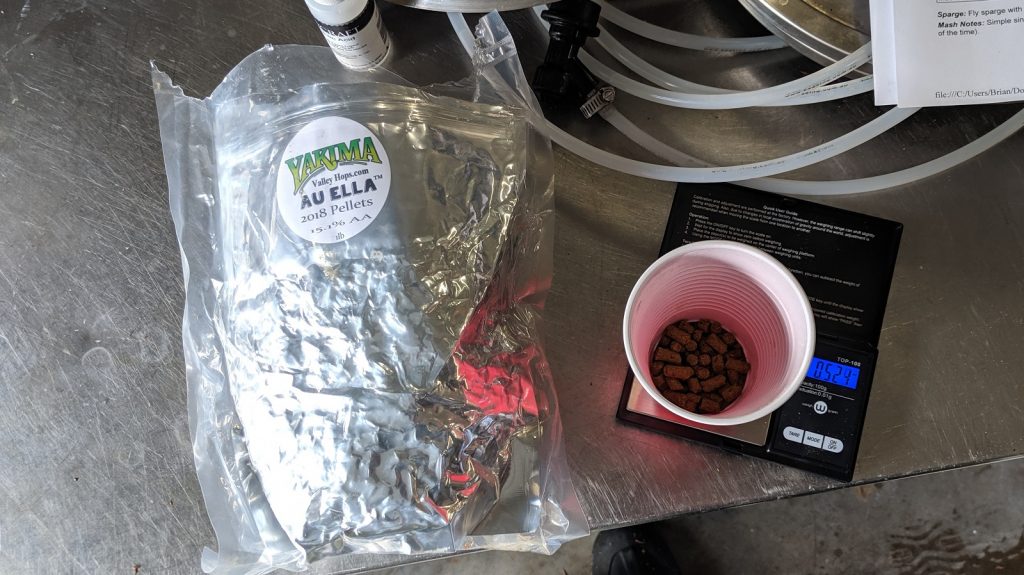
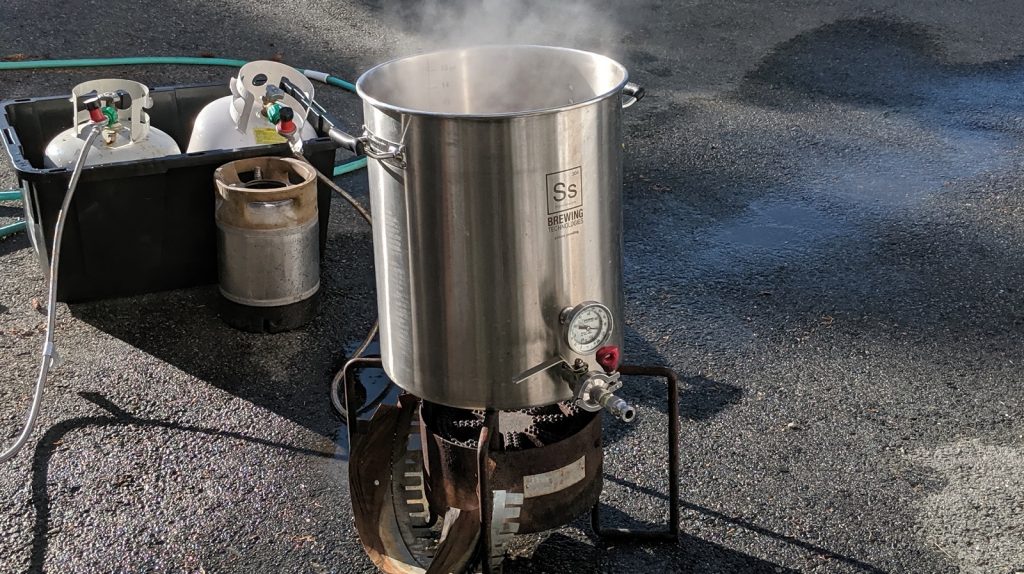
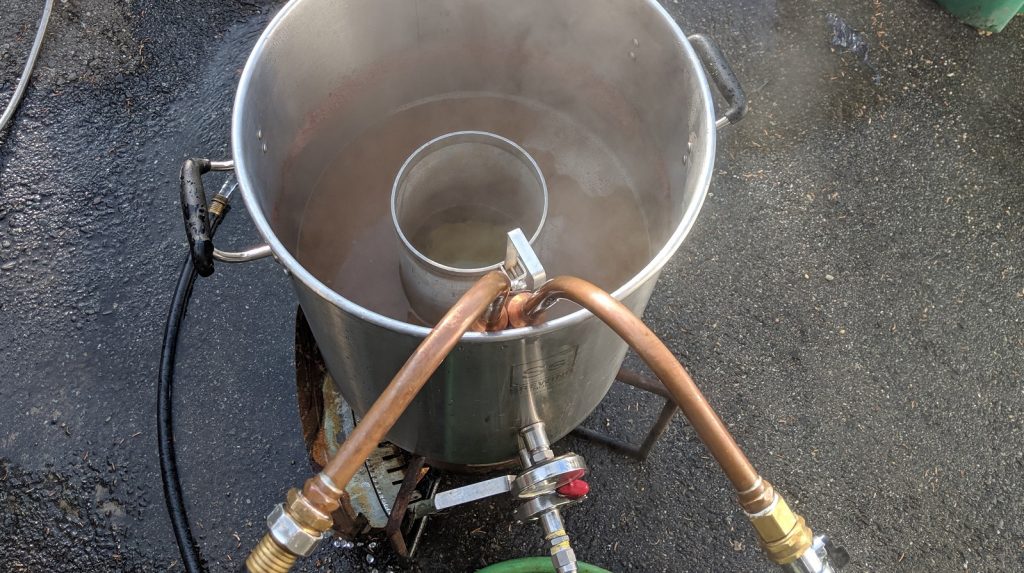
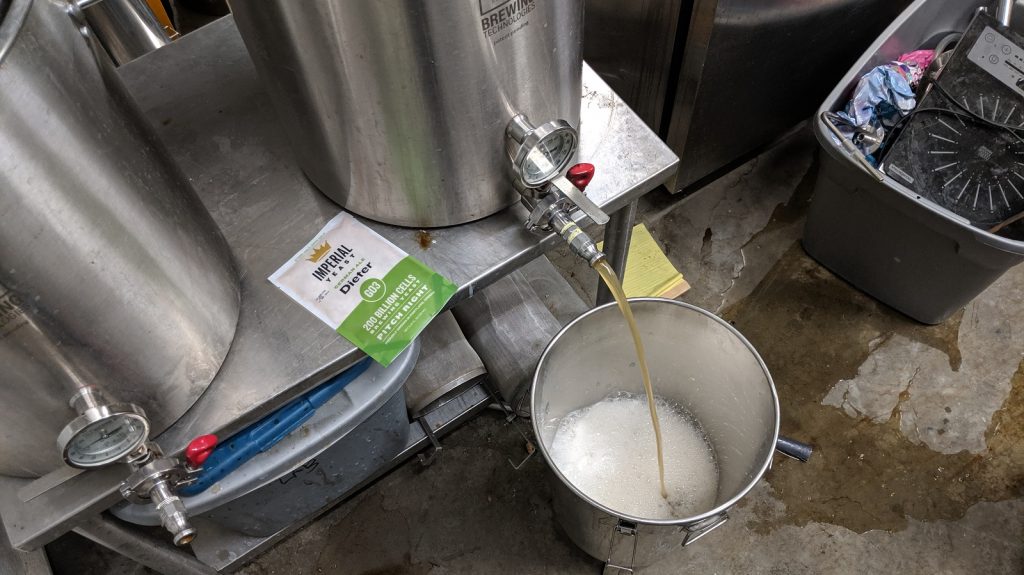
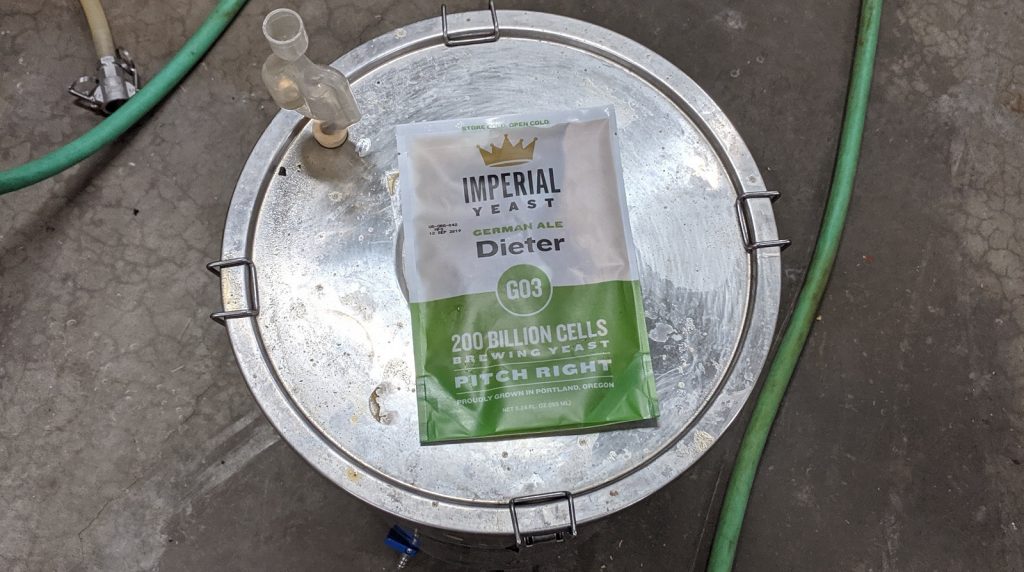
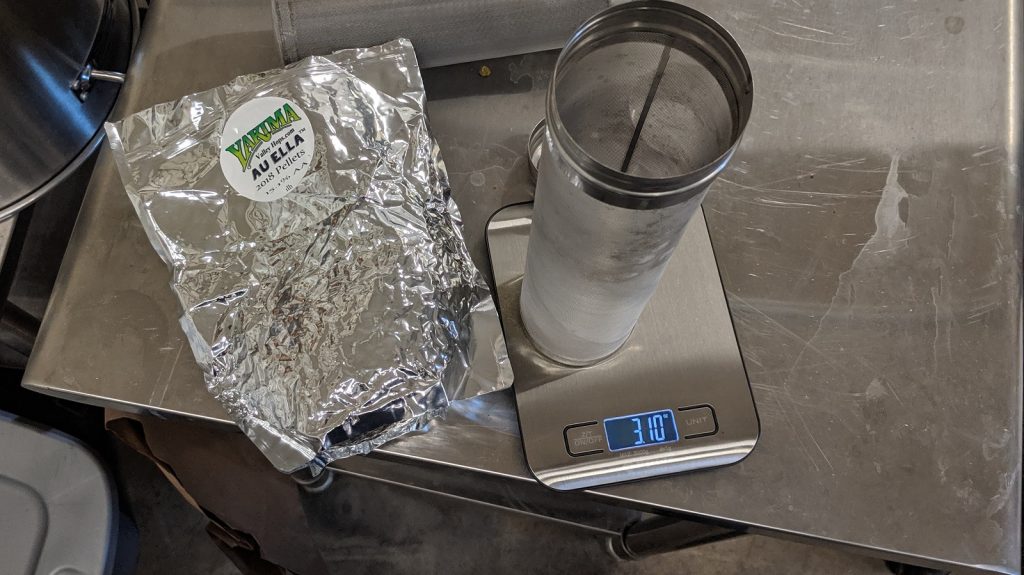
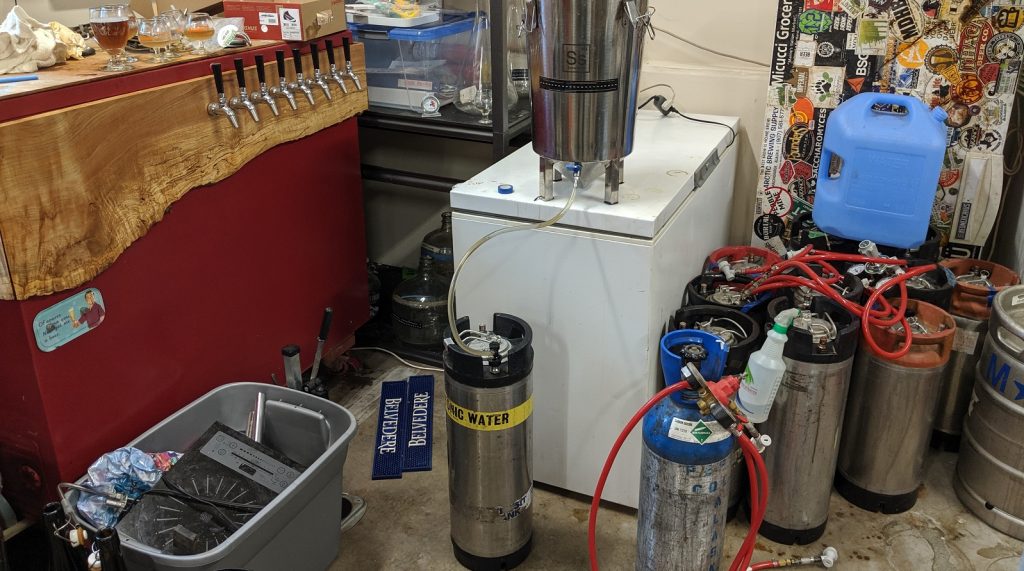
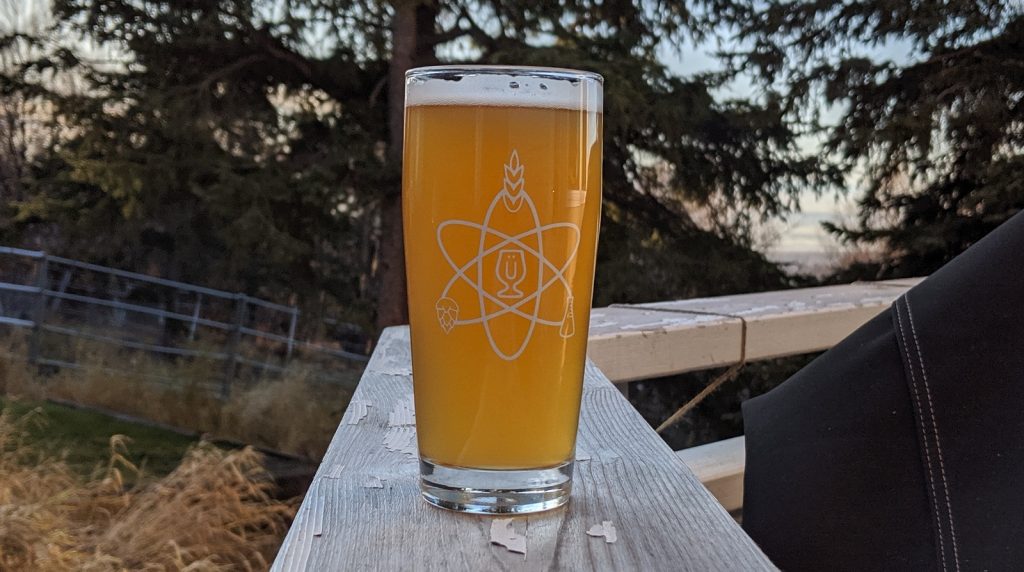
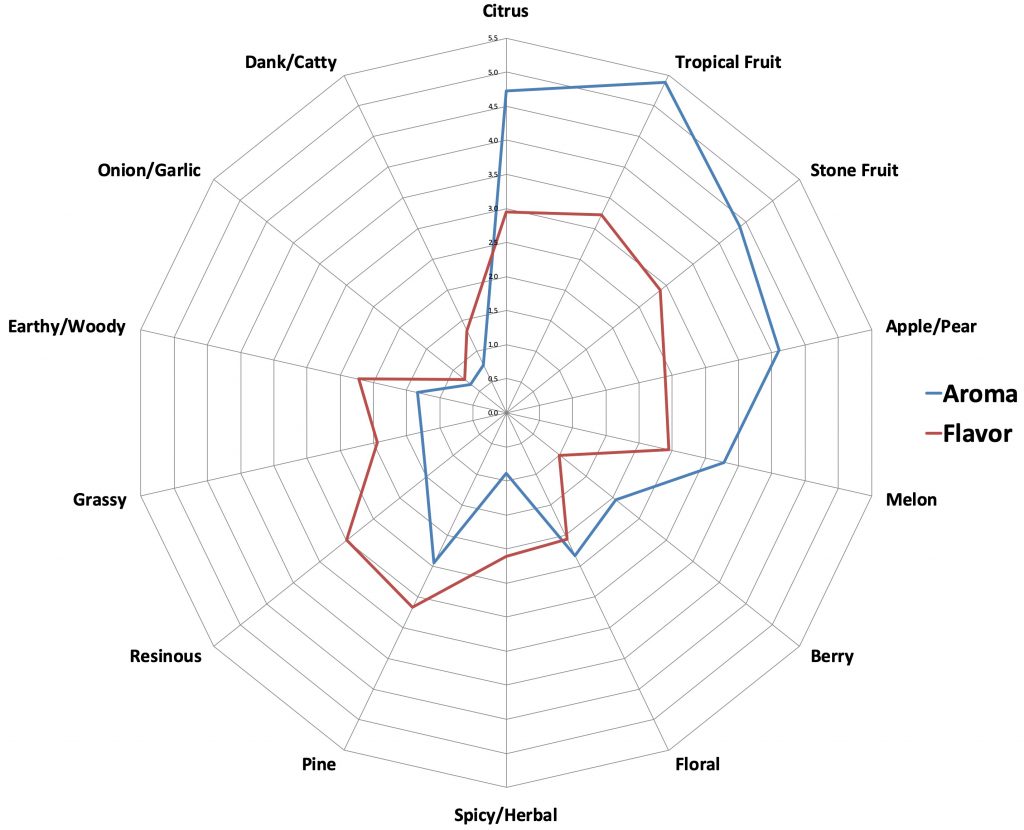
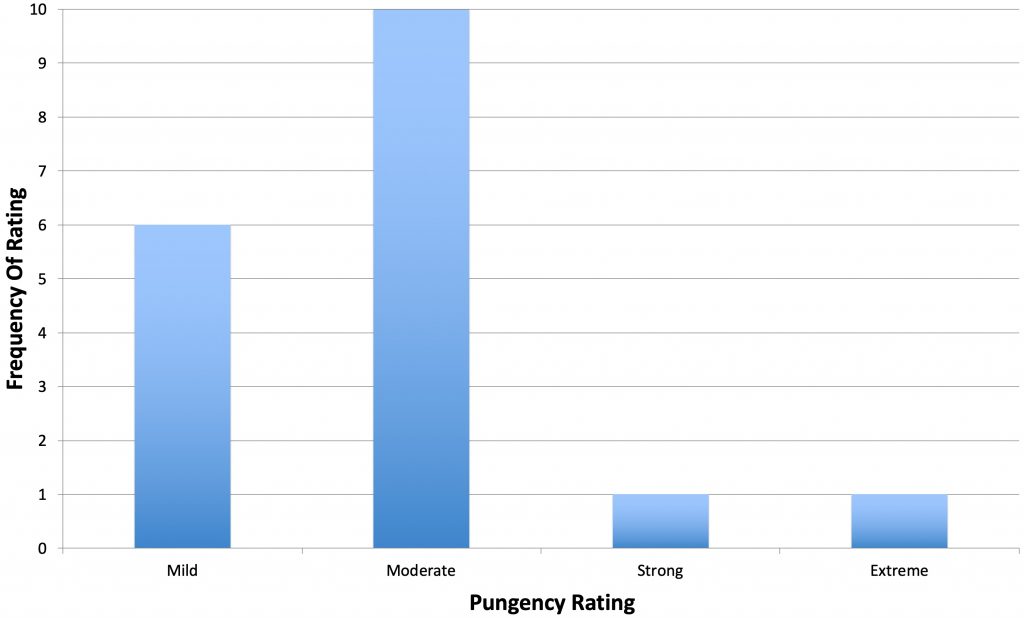
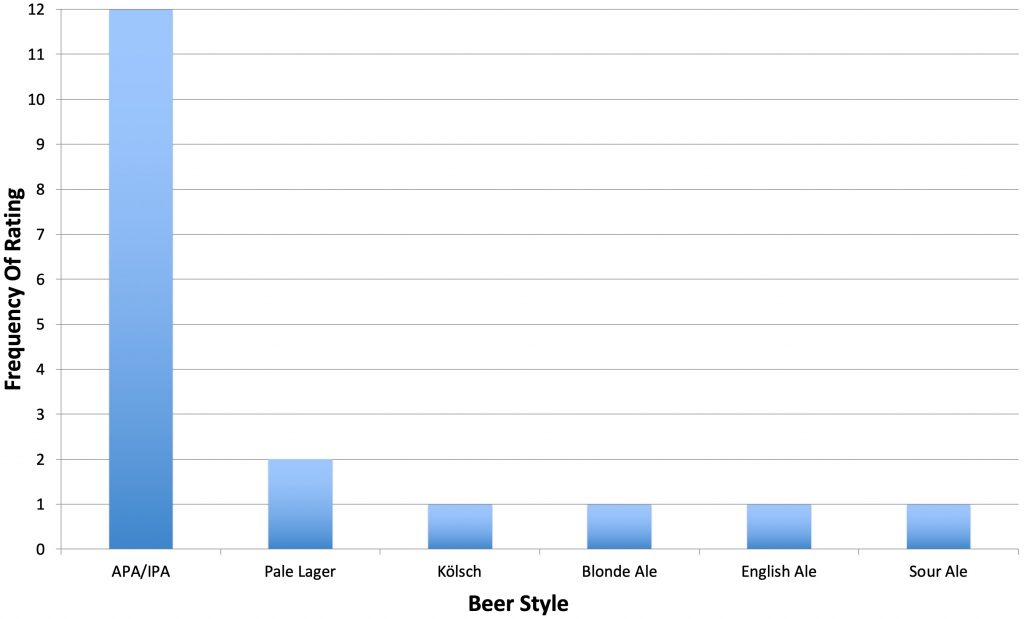
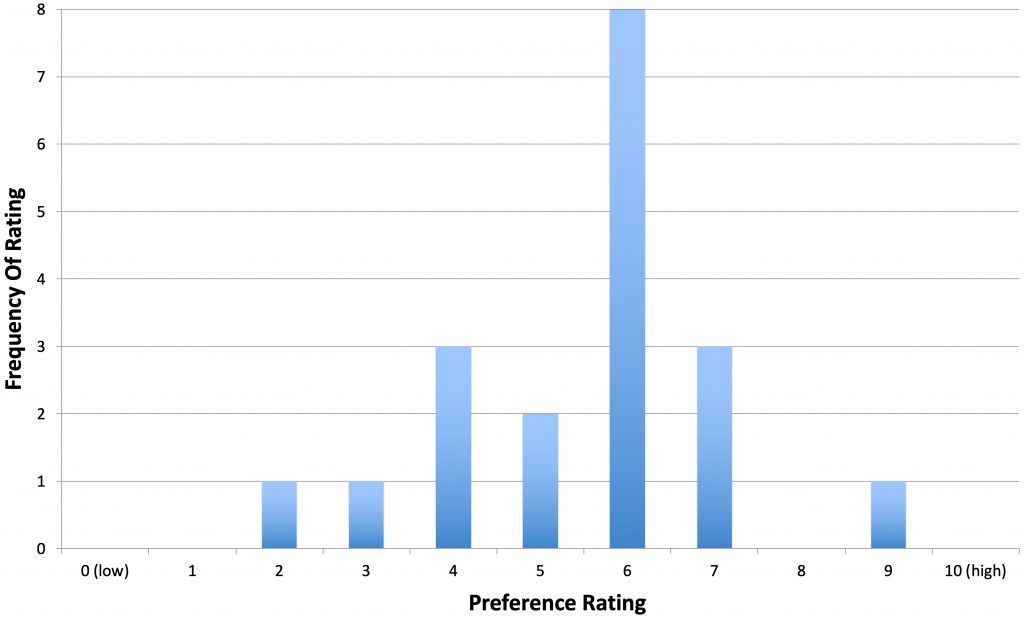











5 thoughts on “The Hop Chronicles | Ella (2018) Pale Ale”
Beautiful hop. Pairs amazing with Mosaic and Conan in a neipa.
There are very few hops in these stories (which I really appreciate, btw) that aren’t ranked by others as being appropriate in an APA/IPA. Based on the descriptors you gave it I thought about pilsners, kölsch, mild, or even a belgian golden/strong ale. Is it just that everyone wants to drink IPAs???
Pretty much, Marc, unfortunately. So many great styles that are not given much love any more. I think, and I know this will be construed as being negative … and everyone can drink what they like 🤪 right … but I feel many new beer aficionados are younger and were introduced to beer via IPA. That is their only palette they have; plus it is cool and hip to drink them and comment in local beer blogs. Not being mean spirited. I think it’s just the reality. I agree as well that I enjoy the work on this site and have brewed many Short and Shoddy’s!!!!
Is it surprising the most hop forward beer style is also the most common choice as a style going well with the particular hop being tested? Would you rather pick brown porter, scottish light or belgian dubbel in which hop choice is pretty much irrelevant?
I think bias has a big role to play in these experiments. If you make a pale grist and exclusively use one hop in moderate amounts as well as a moderate dry hop, you are basically creating an IPA. Unless the beer isn’t liked at all by a taster it’s no surprise then that for most beers, IPA style gets shoved to the top of the style list.
I’m sure if you made a lager and used the same hop (minus the dry hop) a lot of tasters would then suddenly say it works well with a lager.
Of course, modern IPAs being a modern fascination are a lot more forgiving for varied and wacky hop flavours as IPAs are defined by hops rather than the other way around. Even if you chucked in a kilo of noble hops in you could easily call it a spicy historic English India pale ale. Take for example all the high Alpha acid American ‘bittering only’ hops released in the 70s that have made a comeback as aroma/dry hops in modern IPAs as people thirst for hop flavour has grown.
I’m sure if you went back 25 years ago to the early days of modern commercial IPAs where an IPA was basically limited to cascade and a few other varieties, you would get different results. But given how diverse IPAs are in the flavour descriptors of hops nowadays I think you would struggle to find a hop that made a beer un-IPA like.